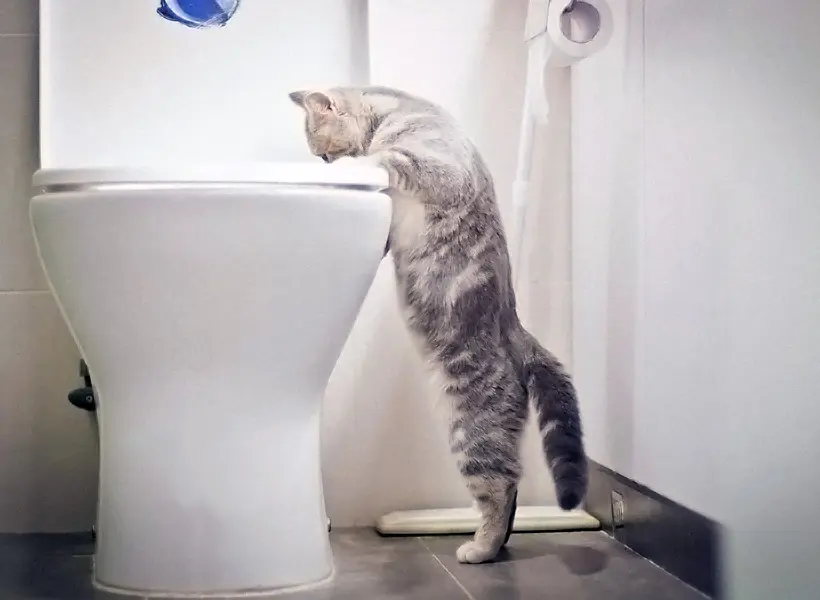Avoid Clogs and Damage: Don't Flush Cat Poop Down Your Toilet - Expert Insights
Avoid Clogs and Damage: Don't Flush Cat Poop Down Your Toilet - Expert Insights
Blog Article
Have you been on the lookout for suggestions around Can You Flush Cat Poop Down The Toilet??

Intro
As cat proprietors, it's essential to bear in mind exactly how we get rid of our feline buddies' waste. While it may appear practical to flush pet cat poop down the bathroom, this technique can have harmful effects for both the environment and human health and wellness.
Alternatives to Flushing
Fortunately, there are much safer and extra responsible methods to take care of cat poop. Think about the adhering to choices:
1. Scoop and Dispose in Trash
The most common technique of taking care of pet cat poop is to scoop it into a biodegradable bag and throw it in the trash. Be sure to utilize a devoted trash scoop and get rid of the waste immediately.
2. Use Biodegradable Litter
Choose naturally degradable cat litter made from products such as corn or wheat. These clutters are eco-friendly and can be securely disposed of in the trash.
3. Bury in the Yard
If you have a backyard, think about hiding cat waste in a designated area far from veggie yards and water sources. Make sure to dig deep sufficient to prevent contamination of groundwater.
4. Set Up a Pet Waste Disposal System
Purchase a family pet waste disposal system particularly created for feline waste. These systems use enzymes to break down the waste, reducing odor and ecological impact.
Wellness Risks
In addition to ecological problems, purging pet cat waste can also present health dangers to people. Pet cat feces may include Toxoplasma gondii, a bloodsucker that can create toxoplasmosis-- a possibly extreme illness, especially for pregnant women and individuals with weakened body immune systems.
Environmental Impact
Flushing feline poop presents harmful pathogens and bloodsuckers right into the water supply, posing a significant risk to marine ecosystems. These impurities can adversely affect marine life and compromise water top quality.
Verdict
Accountable family pet ownership extends past supplying food and shelter-- it also entails appropriate waste management. By avoiding purging cat poop down the commode and selecting different disposal techniques, we can minimize our ecological footprint and shield human health and wellness.
Why Can’t I Flush Cat Poop?
It Spreads a Parasite
Cats are frequently infected with a parasite called toxoplasma gondii. The parasite causes an infection called toxoplasmosis. It is usually harmless to cats. The parasite only uses cat poop as a host for its eggs. Otherwise, the cat’s immune system usually keeps the infection at low enough levels to maintain its own health. But it does not stop the develop of eggs. These eggs are tiny and surprisingly tough. They may survive for a year before they begin to grow. But that’s the problem.
Our wastewater system is not designed to deal with toxoplasmosis eggs. Instead, most eggs will flush from your toilet into sewers and wastewater management plants. After the sewage is treated for many other harmful things in it, it is typically released into local rivers, lakes, or oceans. Here, the toxoplasmosis eggs can find new hosts, including starfish, crabs, otters, and many other wildlife. For many, this is a significant risk to their health. Toxoplasmosis can also end up infecting water sources that are important for agriculture, which means our deer, pigs, and sheep can get infected too.
Is There Risk to Humans?
There can be a risk to human life from flushing cat poop down the toilet. If you do so, the parasites from your cat’s poop can end up in shellfish, game animals, or livestock. If this meat is then served raw or undercooked, the people who eat it can get sick.
In fact, according to the CDC, 40 million people in the United States are infected with toxoplasma gondii. They get it from exposure to infected seafood, or from some kind of cat poop contamination, like drinking from a stream that is contaminated or touching anything that has come into contact with cat poop. That includes just cleaning a cat litter box.
Most people who get infected with these parasites will not develop any symptoms. However, for pregnant women or for those with compromised immune systems, the parasite can cause severe health problems.
How to Handle Cat Poop
The best way to handle cat poop is actually to clean the box more often. The eggs that the parasite sheds will not become active until one to five days after the cat poops. That means that if you clean daily, you’re much less likely to come into direct contact with infectious eggs.
That said, always dispose of cat poop in the garbage and not down the toilet. Wash your hands before and after you clean the litter box, and bring the bag of poop right outside to your garbage bins.
https://trenchlesssolutionsusa.com/why-cant-i-flush-cat-poop/

I have been very fascinated with How to Dispose of Cat Poop and Litter Without Plastic Bags and I'm hoping you appreciated the article. Make sure you set aside a second to promote this article if you liked it. Thanks a lot for taking the time to read it.
Estimate Report this page